How to Format New or Second Hard Drive on Windows 10 and Mac
It is never too late to learn how to format a new or second hard drive on your Mac or Windows 10. Now you are in luck as we will prepare you with these tactics in advance.
It is not rare to see people coming and asking how to format their new or second hard drive on Mac or Windows either for freeing up space or for making hard drives to be compatible with a new operating system. As speaking of this, it is essential to grasp the key steps to format your new or second hard drive. Before that, we will walk you through the reasons why or when you need to format new or second hard drives. Read on to discover more!

Part 1. Do You Need to Format a New or Second Hard Drive
To begin with, do you need to format a new hard drive? The answer is positive as formatting a new hard drive is the very first step before you start to use the new hard drive, isn't it? The gesture to format a new drive means so much to users because it signifies the note that this new drive is working correctly, completely clean, and free of malware or malicious code that may potentially harm your installation and personal files. Now you see when you buy a new hard drive, you need to make sure the drive is functioning well and it is clean.
What about second or used hard drives? Honestly, formatting second or used hard drives will help avoid a lot of issues or compatibility problems, especially when they were previously connected to a different operating system.
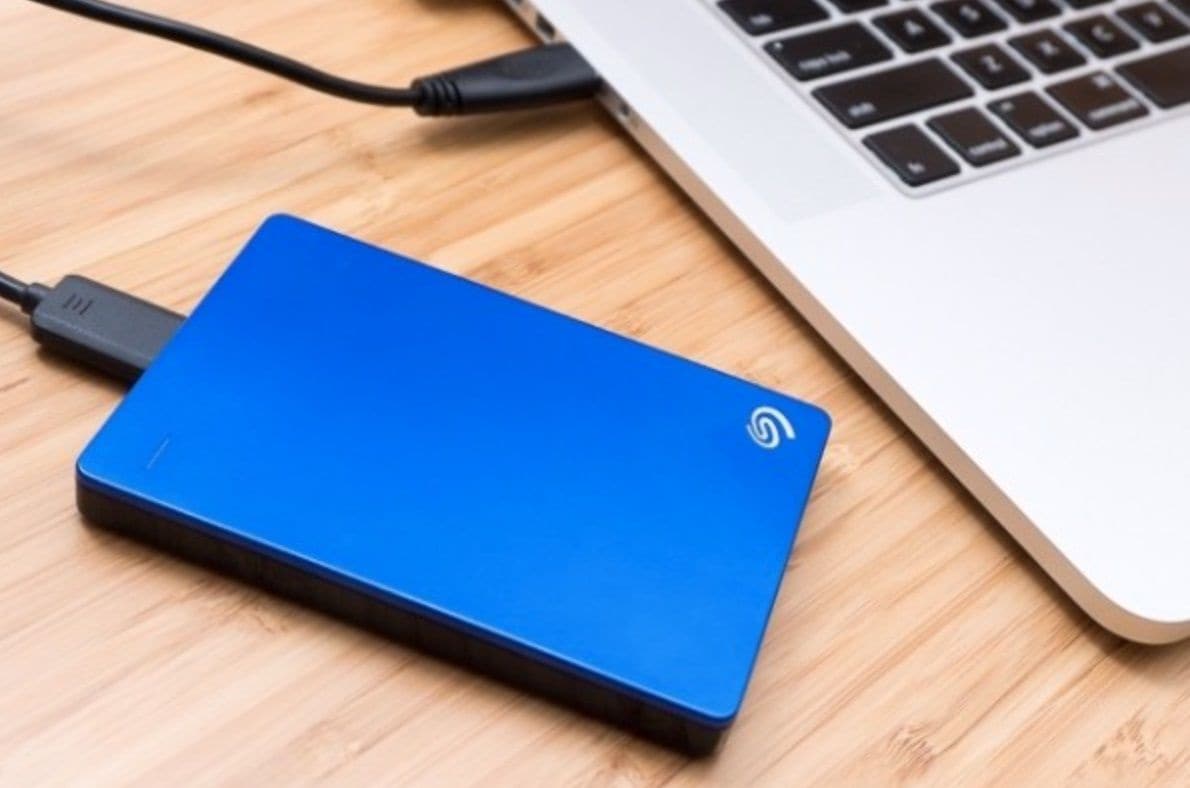
In short, formatting a new or second hard drive brings evident benefits to users as listed below.
- Tidy up your drive and free up space.
- Eliminate viruses, conflicts, or else from the existing drive.
- Remove any potential malware or malicious code.
- Erase any information on the used drive so that your operating system can read data from, and write data to, the drive.
- Improve system performance.
- Save money.
If you are going to format a new or second hard drive, keep in mind the following tips.
- Be 100% sure to back up your data before taking any action. This is especially vital to used hard drives. Otherwise, you may need to turn to professional software to recover the data lost during formatting.
- Makes sure your PC is fully charged as formatting or partitioning will take some time to finish.
Part 2. How to Format a New or Second Hard Drive in Windows 10
Formatting a drive may vary in terms of different operating systems, like Windows and Mac. Although in principle, formatting means to erase existing data and free up space for utilization, the procedures are not the same for Mac and Windows.
In specific, if you want to know how to format a new or second hard drive in Windows 10, don't miss the step-by-step instruction here.
Check your hard drive and categorize it as partitioned or non-partitioned beforehand. For a drive that has been configured with a partition, simply go through the formatting steps here to make a fresh drive.
Step 1: Open Disk Management
Type in disk management from the quick search box or directly move to the administrative tools to locate the disk management. Launch Disk Management.
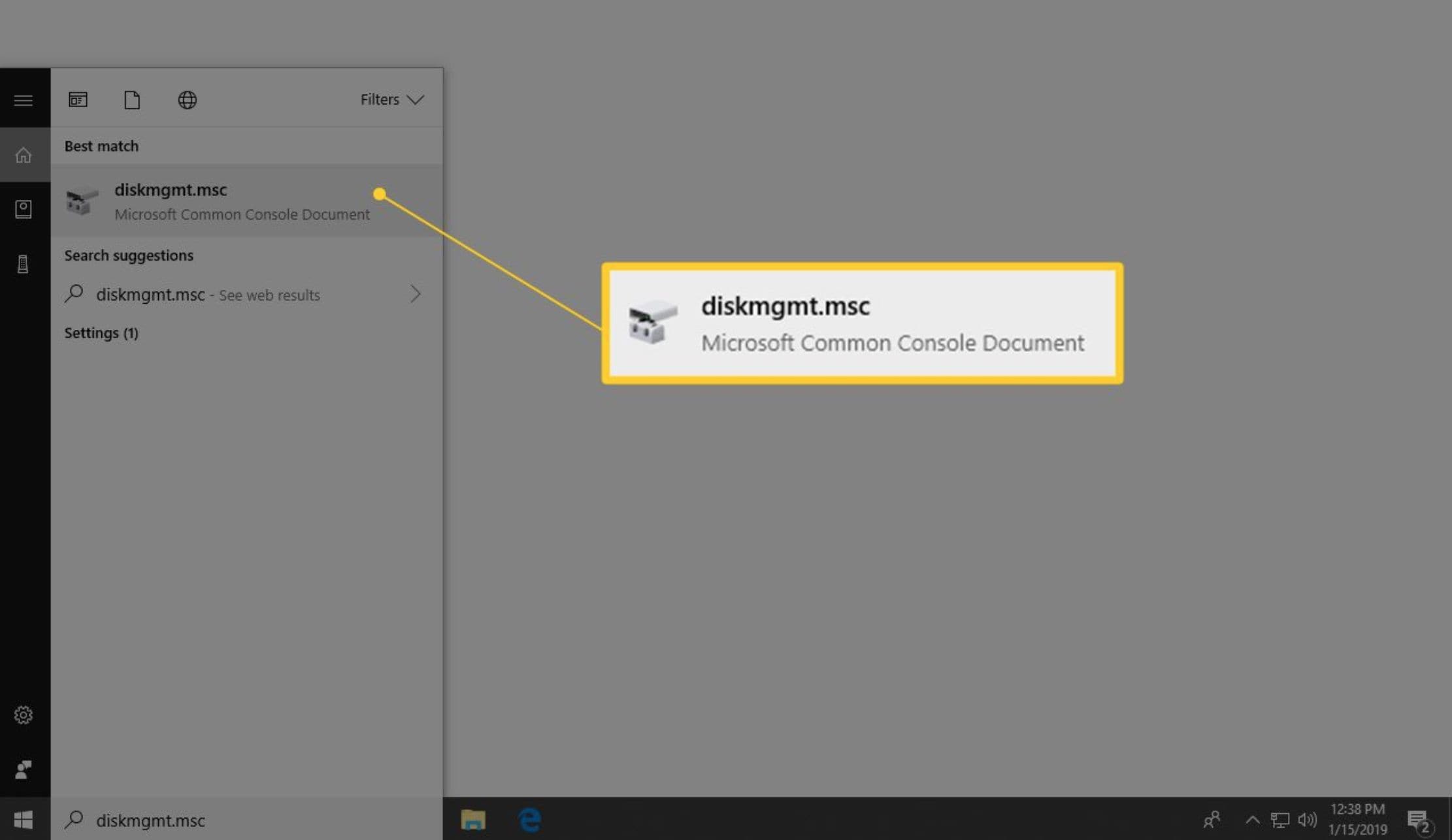
Step 2: Right-click to format the drive
Now that you've found the drive you want to format, right-click it and choose Format to open the disk-formatting wizard.
Tips: Before you format the hard drive, you may click and open the drive to make sure this is exactly the drive you want to erase data and make a fresh drive.
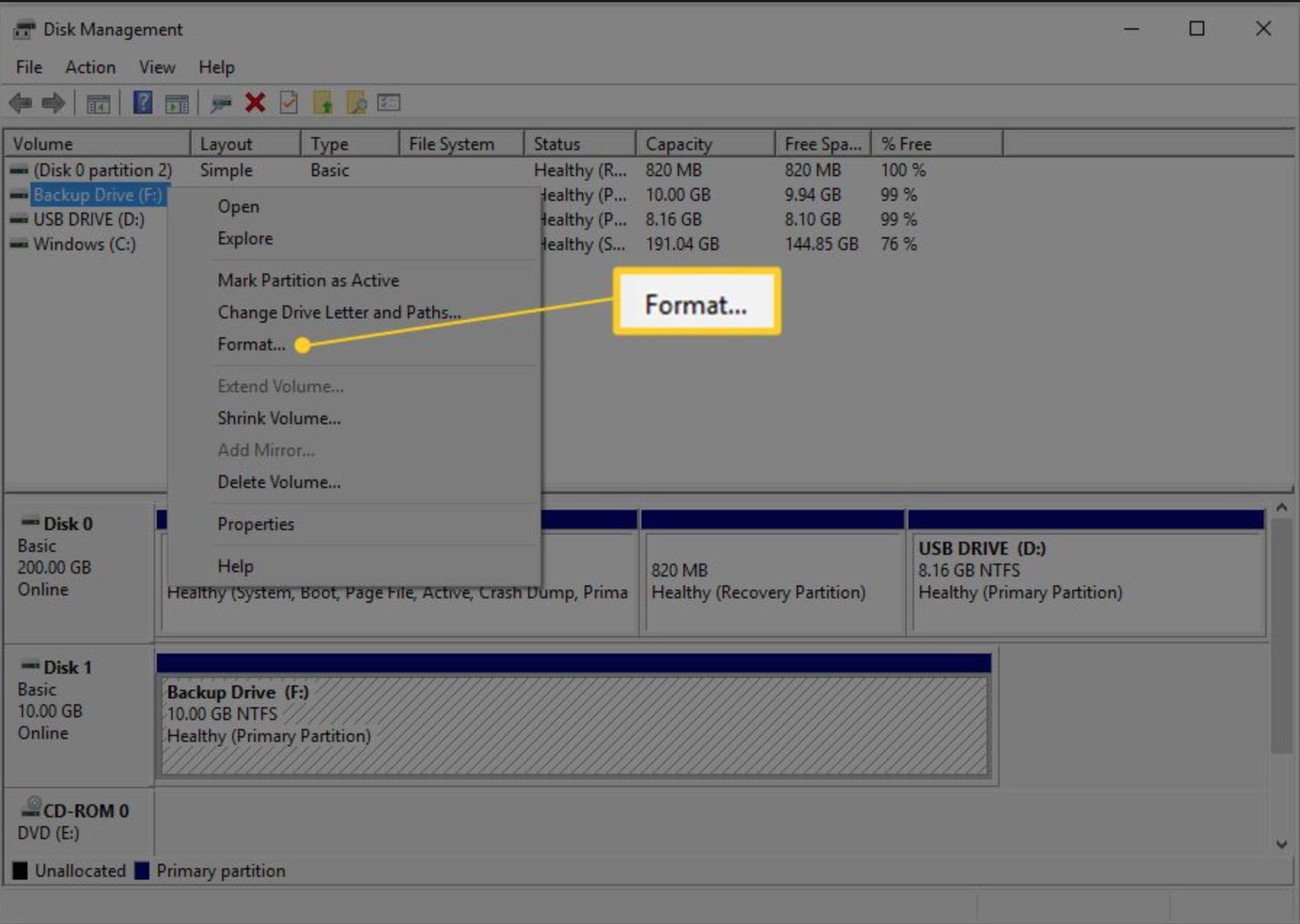
Heads-up here! When you fail to locate the drive to format, or you see that an Initialize Disk window appears, it probably means that the hard drive is new and it's never been partitioned yet. In this case, you have to partition the drive beforehand as partitioning is something that must be done before a hard drive is formatted. Let me walk you through a brief procedure to partition your hard drive.
Step 1: Open Disk Management
Use the command line to enter the disk management interface, where you will see a pop-up window indicating "You must initialize a disk before Logical Disk Manager can access it."
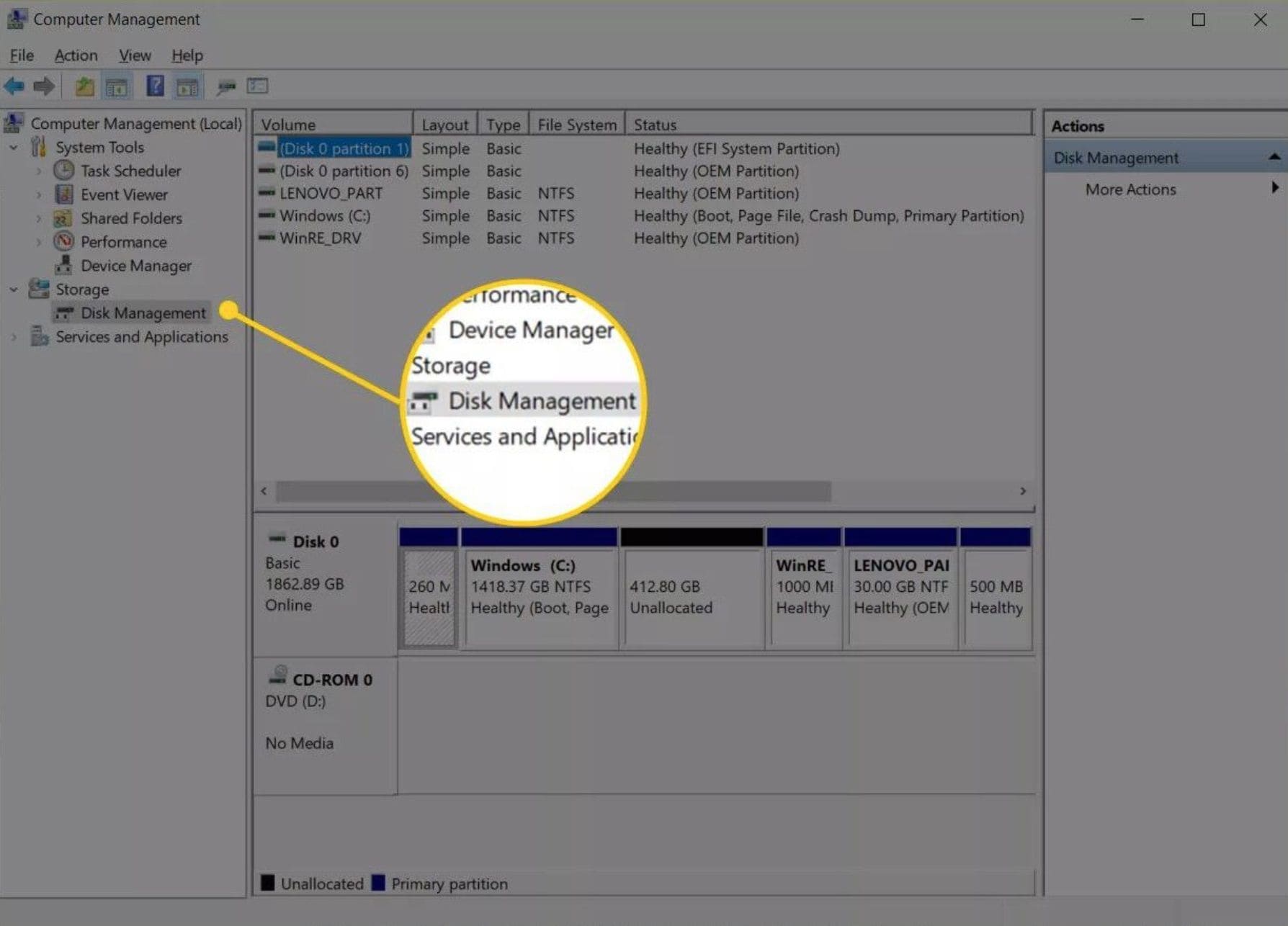
Step 2: Choose a style
Besides, choose a partition style based on the hard drive size. If it is larger than 2TB, choose GPT, otherwise choose MBR. Click OK to proceed.

Step 3: Locate the drive to partition and select a space for the partitioning
From the Disk Management window, tap the hard drive to partition and right-click to choose New Simple Volume.

Step 4: Proceed to the partitioning wizard
On the pop-up windows, click Next to proceed according to the partitioning wizard. You will see a window asking you to verify the partition choices from Completing the New Simple Volume Wizard screen. Once you have verified all the choices, click Finish to complete the partitioning.
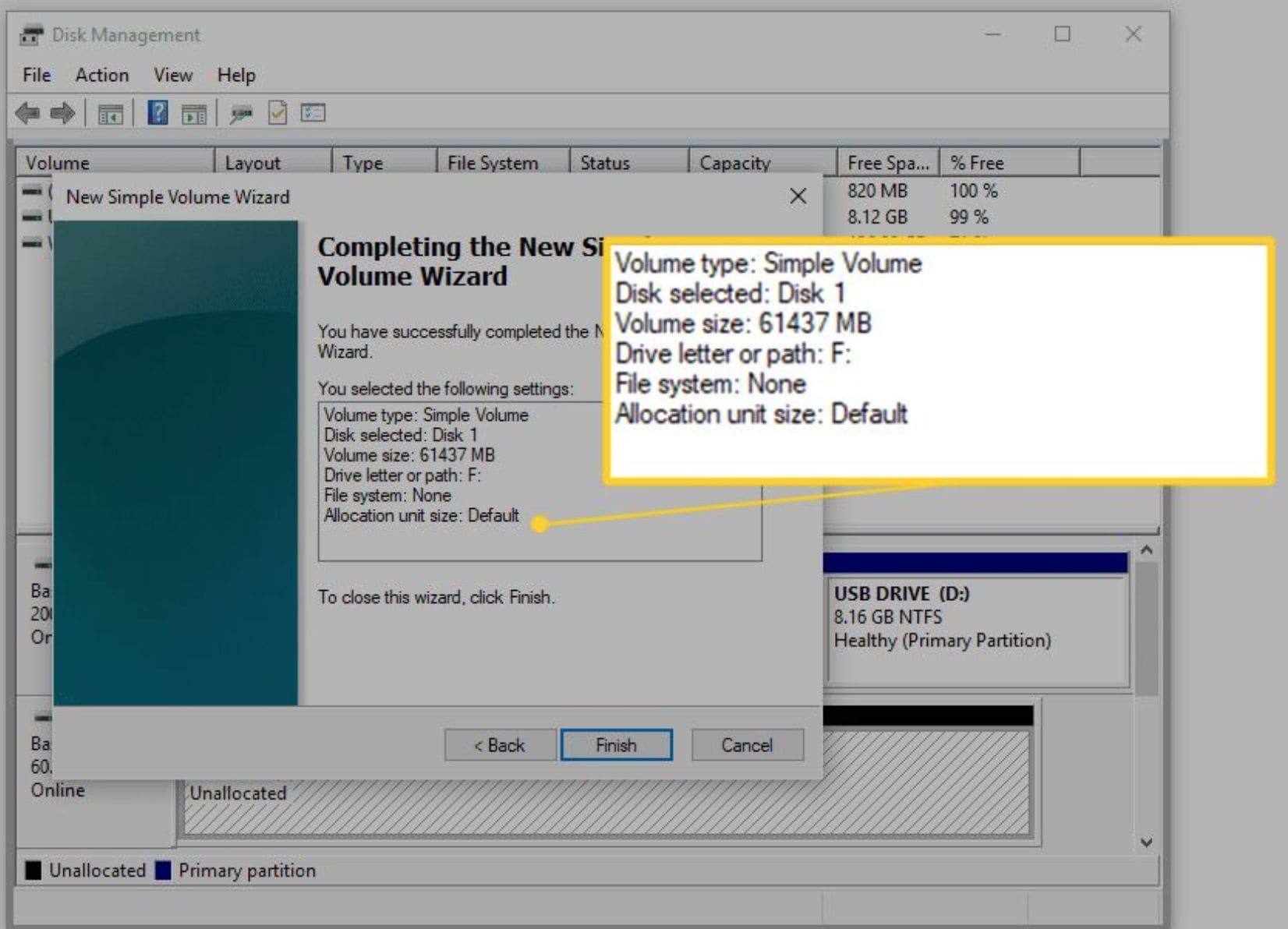
This is the end of your partitioning a hard drive before you take steps to format the hard drive. Note that in Windows 10, these procedures are easy to follow just like the other Windows systems with only minor differences in terms of the user interface.
Part 3. How to Format a New or Second Hard Drive on Mac
Mac is a very much different operating system from Windows, let alone their features and steps to format a hard drive. Therefore, it is necessary to present a tutorial guide here to format or partition a hard drive within Mac OS.
Step 1: Launch Disk Utility from the launch pad on Mac or find disk utility from Finder
Open your Finder and enter "disk utility" on the quick-search bar to locate the Disk Utility icon. Or start launchpad and find the disk utility from the launchpad.
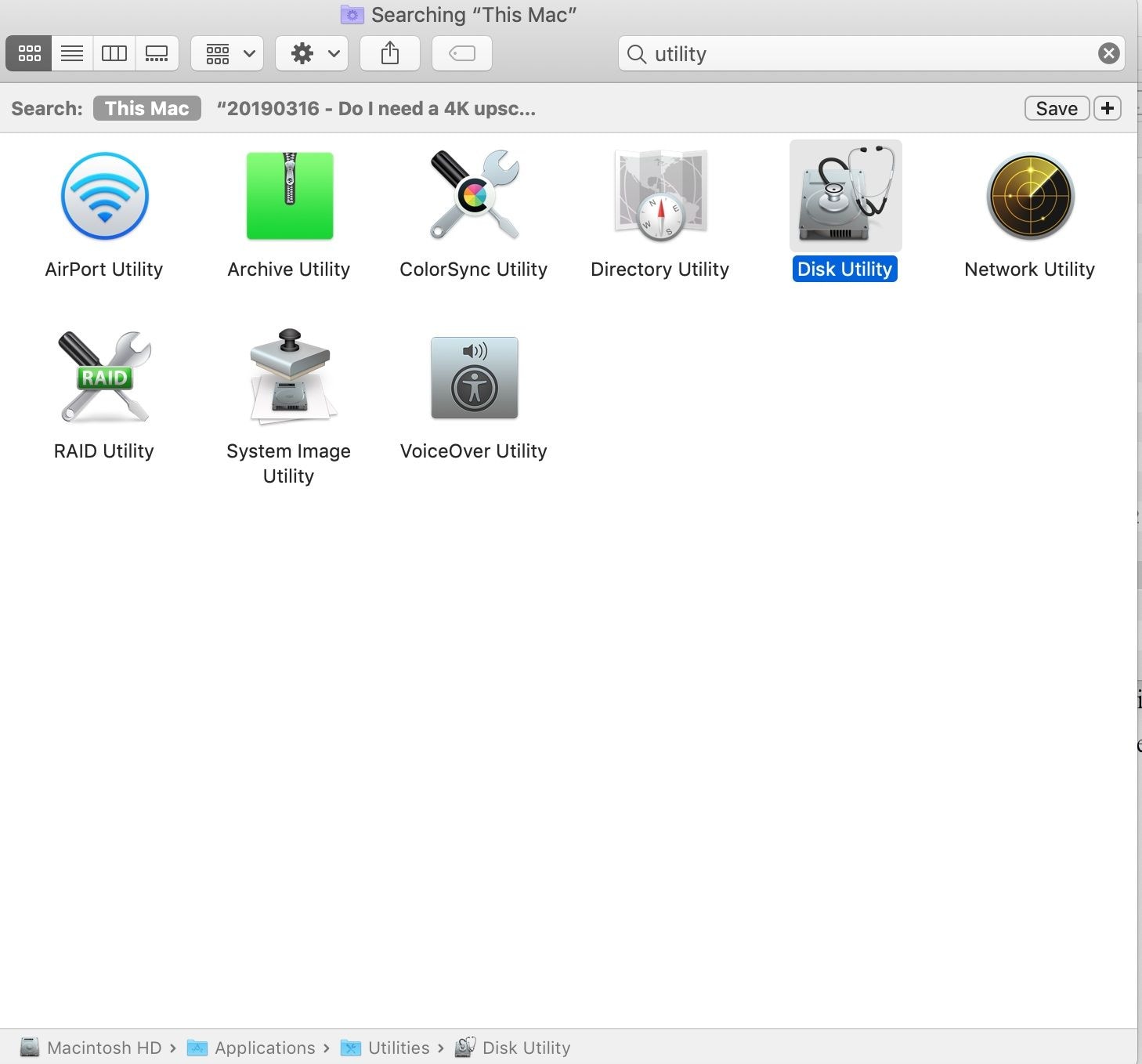
Step 2: Locate the drive from the Disk Utility window
Click on the target hard drive from the sidebar on the left and you will see the details of this drive on the right pane, such as disk image volume, and a few buttons on top of the window.
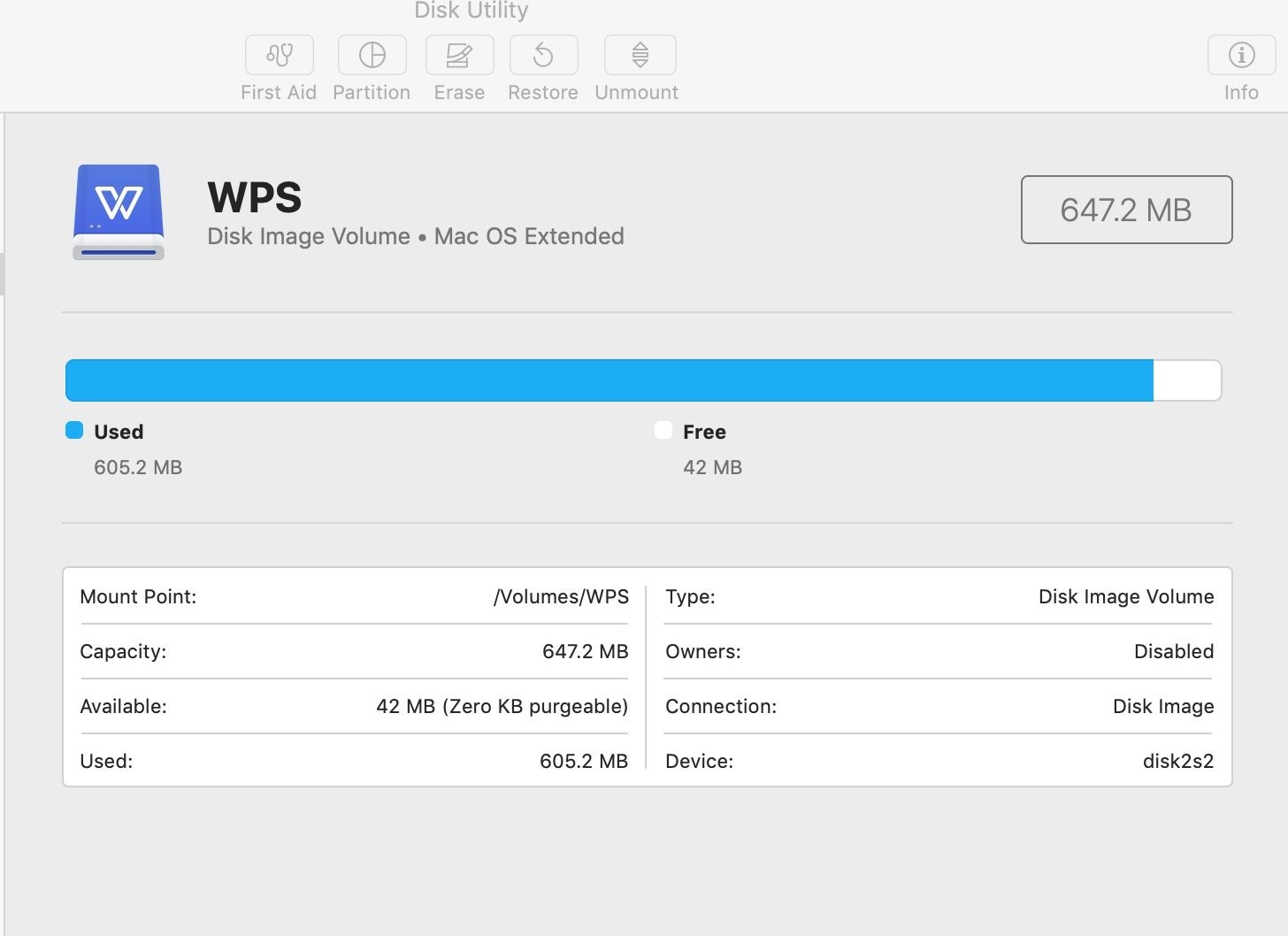
Step 3: Erase the data on the drive
Tap on the Erase button from the function tab on the top of the window.

Step 4: Choose Mac OS extended for the volume format menu
On the displayed window, choose Mac OS extended for the volume format menu and you may name the hard drive on the Name box. Then, click the Erase button below to kick off the process, which will take a few minutes only.
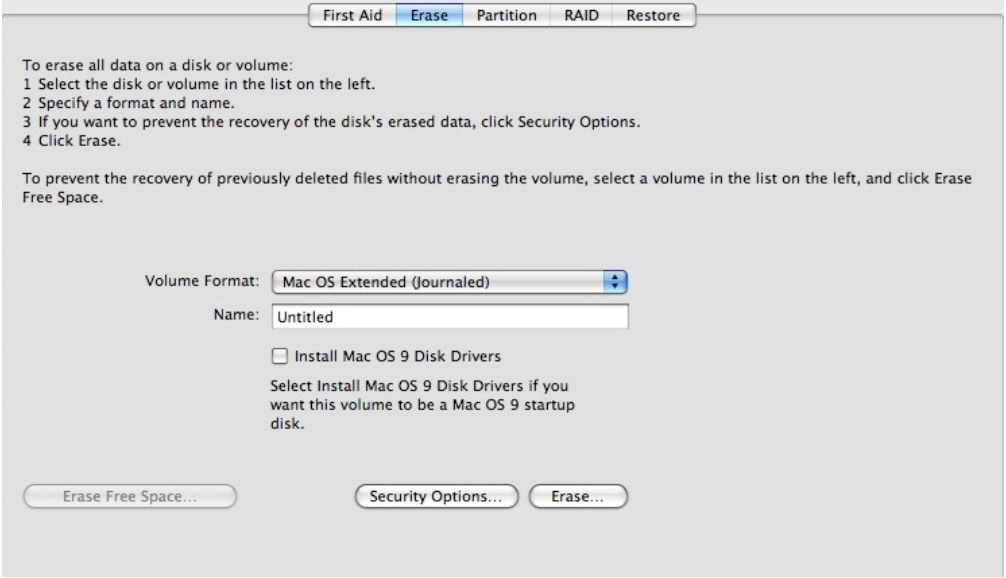
Similar to formatting a hard drive, if you want to partition your hard drive due to various reasons, such as creating two OS within one box or saving space for data backup, you may follow steps here to partition the hard drive. The steps to partition a hard drive resemble those of formatting a hard drive except the part of erasing data. In terms of partitioning a hard drive, when you navigate to the drive window, check for the volume information of the hard drive in advance.
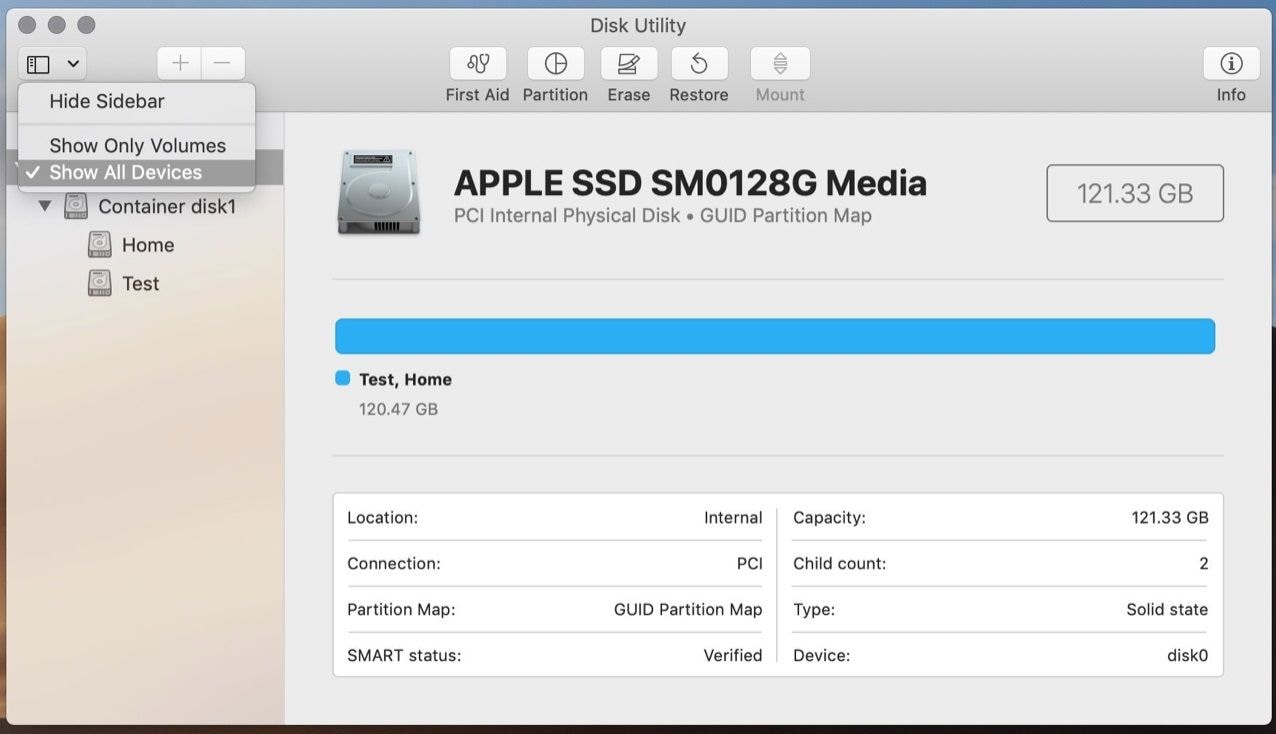
Next, tap on the Partition button on the top of the window, where a window will pop up to let you specify the number of partitions, the volume of each partition, and the name of these partitions. When all these settings are done, click Apply to move on to partition the hard drive eventually.
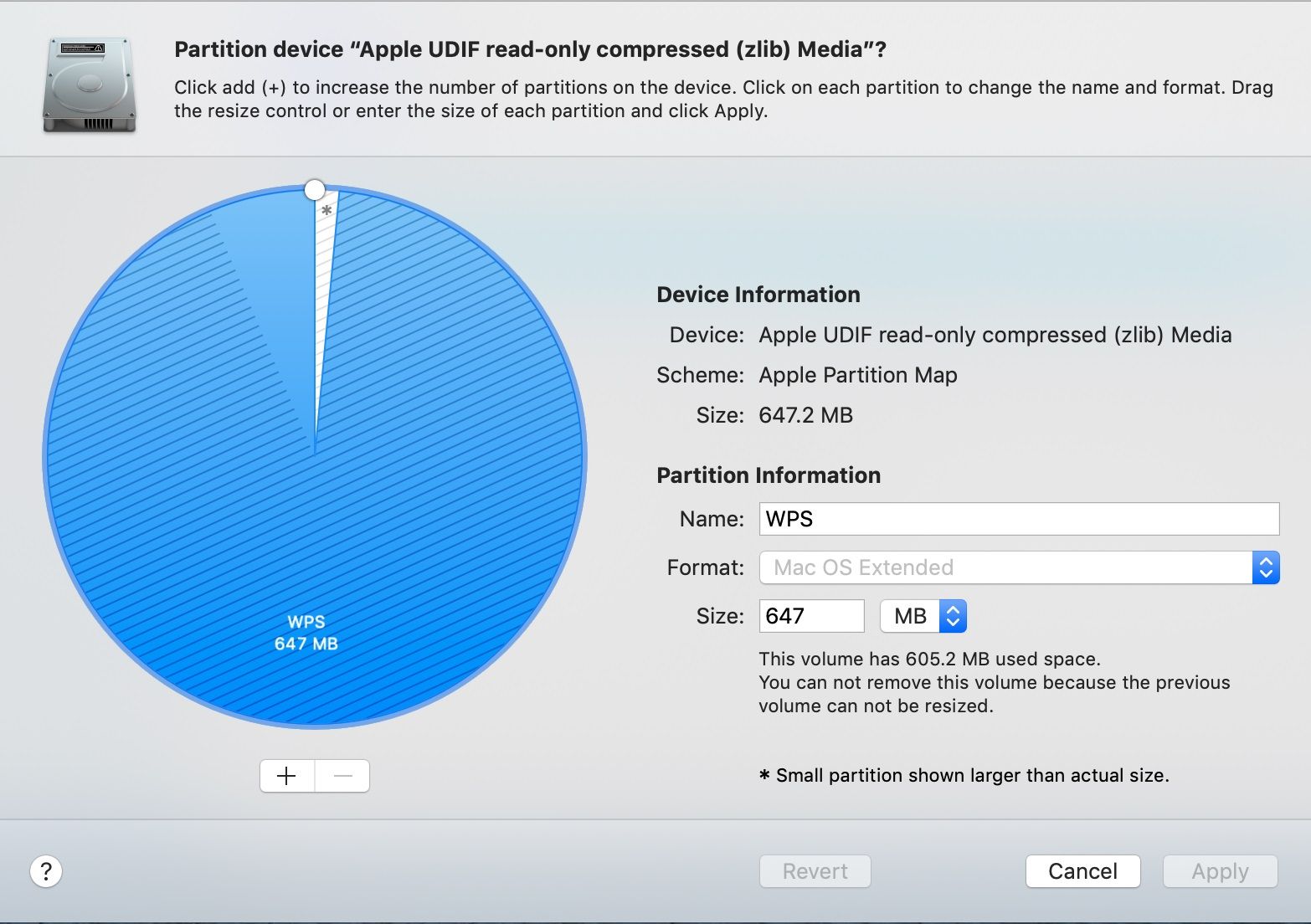
Tips: It is never too late to emphasize the importance of backing up your data before you format or partition your hard drive. You cannot be too cautious during data backup. We all don't want to see or hear any data loss. That is sad, isn't it? What if that happens? Can we have a remedy solution to get the data back? Absolutely yes.
Recoverit Mac Data Recovery is the very tool to help you get back your data that has been lost accidentally or the data you forget to backup beforehand. With it, you may relax a little bit because it will help you recover your data completely, no matter for a crashed drive or accidental deletion of data.
To do so, you may follow the tutorial guide here.
Step 1: Locate the target drive
Launch Recoverit on your PC and locate the drive to scan. Note that once you open Recoverit, it will automatically display all available drives and you just need to select the target drive to recover data. Click the Start button at the bottom to proceed.

Step 2: Scan the file location
On the left pane, there will be two categories, namely file type, and file path, both of which are created to help users with tracking down to specific files to recover. As soon as the scan ends, there will be a preview of your lost files on the right pane.

Step 3: Preview and recover formatted data
Select the target files by ticking the checkboxes in front of the file name on the left pane and click Recover at the bottom to kick off the process. It is recommended that you save the recovered data files to a new drive once the whole process completes.

Part 4. Identify which type of hard drive you have
Wondering to format a new or second hard drive on windows 10 and mac? Well, you need to identify the type of hard drive you have right now. The first step is always to understand your tools properly, before executing any task. To identify as your supplier or go into properties of your hard drive from the control panel.
Part 5. Common File Systems for Mac and PC
Before we dig further into the topic, you need to know about some common file systems for Mac and PC. Here they are;
1. FAT32
It is one of the most used and old file systems. FAT32 are acronyms that represent File Allocation Table 32. In the history of computing, it is the most experienced file system. Here are its Pros and Cons;
Pros
- FAT32 brilliantly supports partitions of more than 8 TB.
- It is remarkable incompatibility, may it be any Android or Apple device, FAT32 is compatible.
Cons
- Not preferable when it comes to the installation of heavy applications.
- Not efficient in storing large files.
2. exFAT
Extended FAT or exFAT is without any doubt a remarkable Microsoft proprietary file system. One of the common uses of exFAT is in modern digital cameras. SDXC memory cards with high capacity are also pre-formatted with exFAT.
Pros
- Unintentional deletion is never a problem, it can restore deleted files.
- Allows you to store larger files than 4 GB and has no realistic partition-size limits.
Cons
- Less compatibility than FAT32.
- Lacks extra features such as journaling functionality in the NTFS file system.
3. NTFS
It is one of the most modern file systems. NTFS is in default use of windows. After installing Windows 10, your system drive is formatted with NTFS. It was first introduced in Windows XP.
Pros
- Allows you to back up the boot sector and is compatible with Linux operating systems too.
- Comes with no realistic partition size limit and is efficient in supporting large files.
Cons
- Not applicable for Windows 95 and 98 systems.
- It becomes slow with a small disk size.
4. Mac OS Extended (HFS+)
It came out for Mac OS 8.1 in 1998. Here are the pros and Cons of HFS+
Pros
- It is compatible with all versions of macOS and Mac OS X.
- HFS+ supports fusion drives.
Cons
- Lacks checksums for data integrity.
- HFS+ has no snapshots.
5. Apple File System (APFS)
One of the latest, released in 2017. It is the default for new installations or updates.
Pros
- Efficient in making point-in-time snapshots.
- Utilizes checksums for the data integrity of metadata.
Part 5. Choose the right file system
You’ve known the pros and cons of the above-mentioned file systems. It’s time to choose the right one now.
1. When should you choose the FAT32 file system?
It is fine for storage devices such as flash drives, as it does not support individual files larger than 4 GB. Most preferable for gaming consoles.
2. When should you choose the exFAT file system?
Aiming to transfer files larger than 4 GB from one device to another, you can use exFAT.
3. When should you choose the NTFS file system?
It is the finest choice to choose NTFS for windows environment as it gives you immense security and other advanced features.
Closing Words
Formatting a new or second hard drive as usual. The routine procedure may differ a little bit for different operating systems, such as Windows and Mac OS. However, it is essential to follow two major steps for any systems, data backup, format/partition, respectively. That being said, you need to bear in mind that no matter for formatting or partitioning a hard drive, data backup is a must.
The last but certainly not the least, if you lose the data by accident, you may turn to free data recovery software - Recoverit for help. It will surely do the best to recover your deleted or lost files from your PC, hard drive, USB drive, SD card, mobile phone, as well as other removable devices on Windows and Mac.
FAQs
Is it bad to format a hard drive?
A low-level format on the file system will result in the entire disc being written. Because a disc can only handle a certain number of reads and writes, formatting can shorten the disk’s life. However, experts do recommend formatting the hard drive once in a while. Reformatting the hard disc every year is recommended to help maintain and resolve performance concerns.
What is the best format for a hard drive?
Tragically, none of them are “perfect.” FAT (particularly FAT32) is the most standards-compliant though it does have significant drawbacks. ExFAT is marginally better, but it still has many of the same problems, and it’s only compatible with later OSX versions. Finally, although NTFS is a sound file system, it does have significant compatibility concerns, particularly with access rights and security.
What is the best allocation size for exFAT?
This is dependent on the size of your average file. You may also calculate the free space utilization based on your file sizes. Reformatting in exFAT with an allocation unit size of 128k or less is a simple solution. Then everything fits since each file has less wasted space. Given the size of HD recordings, a big allocation unit (16384 or 32768 KB) will provide superior performance.
How can I increase my computer speed to USB?
Right-click on the USB disc in “My Computer.” Then select the “ReadyBoost” tab. Next, select “Use this device” from the drop-down menu. Finally, choose the amount of RAM you want to utilize for your USB flash drive under “Space to reserve for system speed”.
How can I increase my copy speed?
- Speed Boosting Software is a program that allows you to increase the speed of your computer
- Set the Real-time option in Explorer.
- Change the format of the USB drive to NTFS.
- Invest in a solid-state drive.
- RAM should be increased.
- Turn off the Auto-Tuning feature.
- Better Performance for USB Drives should be enabled.
- Drives should be defragmented.
What's Wrong with Mac
- Recover Your Mac
- Fix Your Mac
- Delete Your Mac
- Learn Mac Hacks



















 ChatGPT
ChatGPT
 Perplexity
Perplexity
 Google AI Mode
Google AI Mode
 Grok
Grok
























Theo Lucia
chief Editor